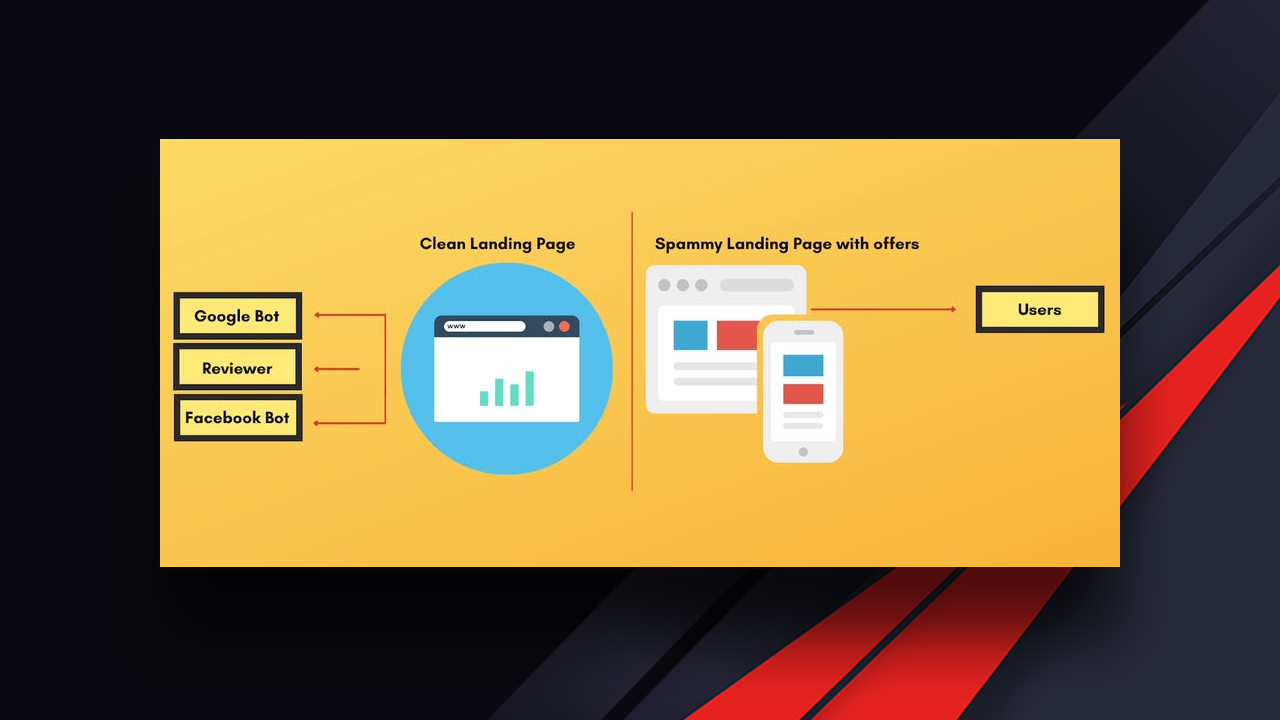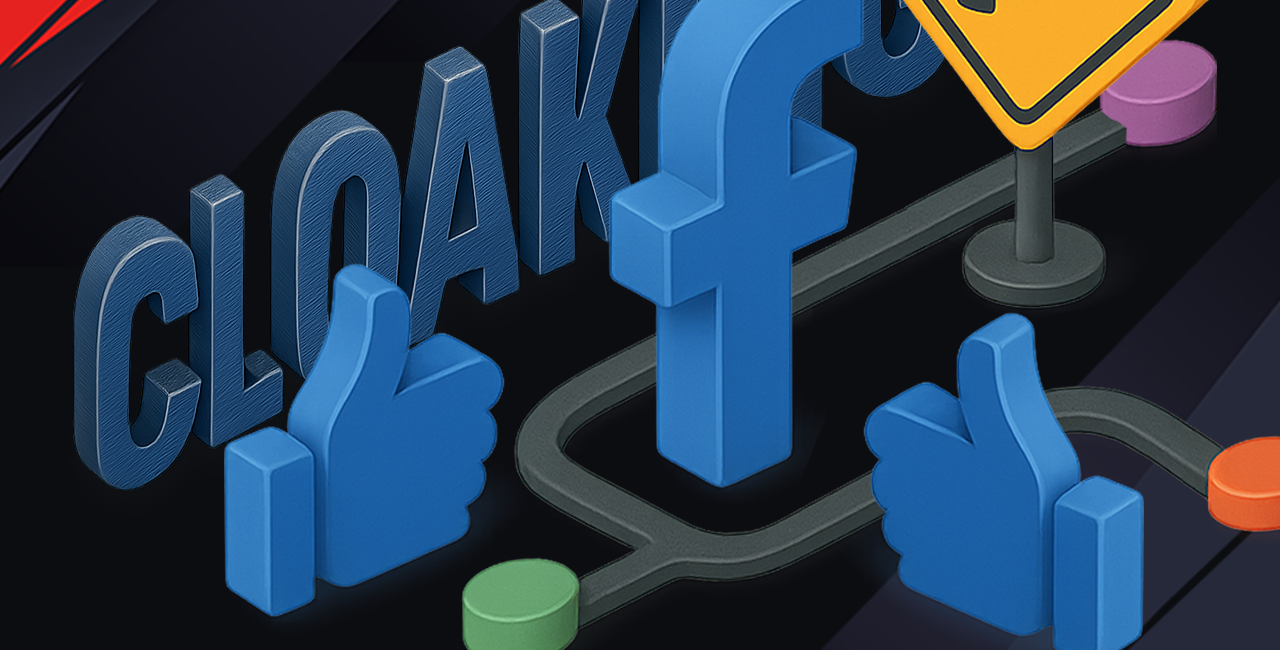If you work with traffic, the word “cloaking” probably evokes either excitement or anxiety. Some consider it an anachronism, others consider it the last bastion of conversions in gray and black niches. So what happens to cloaking in 2025, especially in Facebook’s ecosystem (Meta Ads)?
Let’s break it down: what works, what doesn’t, what approaches are relevant, and what to expect next.
What is cloaking and why is it necessary?
Cloaking is a method of content substitution: one is shown to Facebook moderation, the other to real users. The goal is to pass moderation, run ads, and drive traffic where it needs to go.
Example: instead of a gray gut, the moderator sees a “HEA page”, and the user sees a weight loss tribunal or a casino landing page.
Why is this necessary?
– Bypass automatic and manual moderation
– Keep the account and the BM (at least temporarily)
– Scale offsets that don’t directly let you in

How has cloaking changed in 2025?
Facebook has gotten a lot tougher in recent years to combat such schemes. Here’s what’s important to know today:
1. Moderation has become smarter
Meta is actively applying AI analysis of creatives, texts, URLs, even user behavior. Simple redirects and splitters from the 2020s no longer work. Algorithms easily identify behavioral and technical inconsistencies.
2. Smart cloaca and antidetect to the max
Only dynamic cloakes work, with custom logic based on:
– IP geo
– User-agent
– Fingerprint
– Cookies
– Behavioral patterns
Especially relevant are AI-learning solutions that customize filtering rules for specific offers and regions.
3. A clean front is not just a cover.
Creatives, landings and texts must be perfectly “white”. It’s not enough to just “cover” a landing page – now you need a whole infopole with minimal suspicion. Even favicon, loading speed and hosting – everything has an impact.

What doesn’t work anymore?
– Primitive redirects via JS
– Old PHP cloaks
– The same template on 100 domains
– Lack of monitoring (without logs – like without hands)
If you’re still using cloakes from GitHub with no changes – expect a ban in a couple hours.
What works in 2025?
- Custom solutions with logic on the back end
Better – your own, but you can also use paid ones, for example, with signature auto-updating. - Multidomain pool with auto-replacement
Use fresh domains, proxies, dynamic DNS spoofing. - Test groups and layers
Do tests through a “to test” group, use different BMs with minimal load. - Telegram bots for monitoring
Don’t ignore automatic notifications about bans, trust changes and clicks – they save you money.
Risks and liability
It’s important to remember: cloaking violates Meta rules, and any actions to circumvent moderation are at your own risk. You may:
– Lock account, BM and domains
– Freeze payments in Ads Manager
– Permanently restrict access to the advertising system
If you’re working with white offers, it’ s better not to take risks. If the niche is gray or black – lay down risks, take insurance, automate the replacement of accounts and domains.
Cloaking and AI: who will win?
In 2025, cloaking has become a game not of one move, but an entire game. It is chess with Meta, where the winner is not the one who is more cunning, but the one who adapts faster.
The main trend is neural network antifraud systems on the one hand and AI cloaks on the other. Time will tell who will win. So far, the game is a draw.
Results
Cloaking on Facebook in 2025 is alive in 2025, but it’s become technological, expensive and risky. The ones that work are:
– Keeping up with trends
– Utilizes custom solutions
– Tests and scales intelligently
– Able to replace assets quickly
If you’re in arbitrage – stay on topic, check sources, and don’t put everything on one domain or BM.
Want to get into the topic without a lot of fuss?
Follow professional channels, share your experiences and don’t forget – technology changes, but traffic lives on.




No Comment! Be the first one.